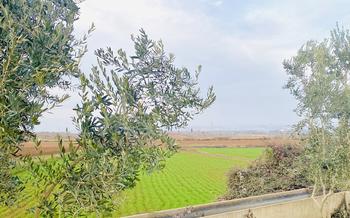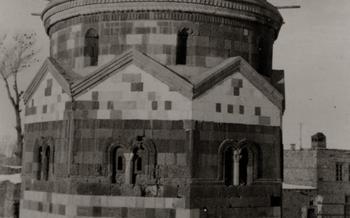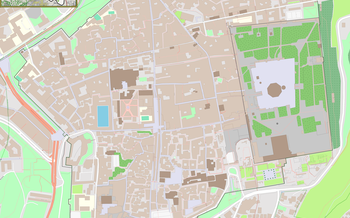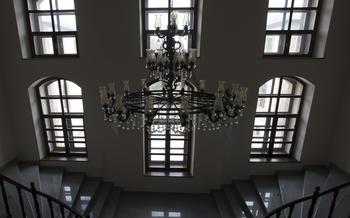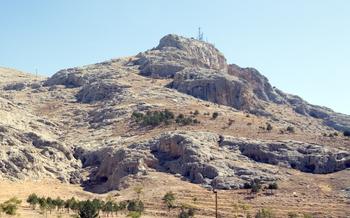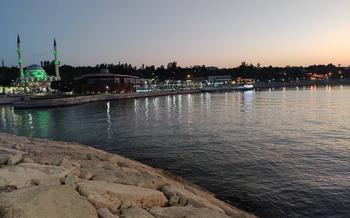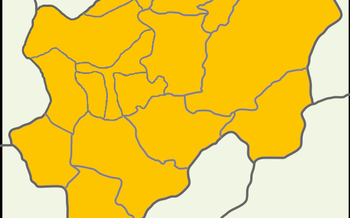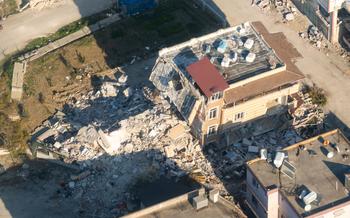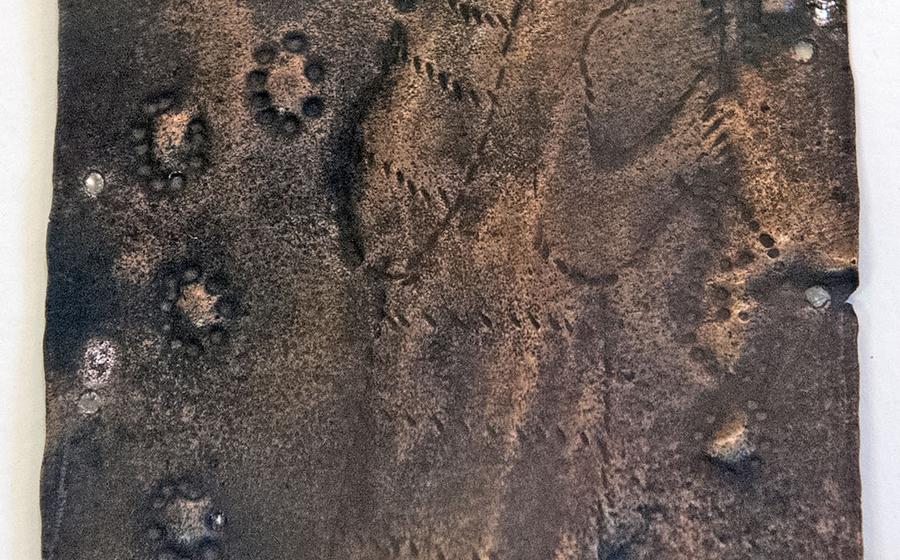
Erzurum Archaeological Museum
- The Antiquity of Erzurum. Archaeological Museum:
- Maritime Trade Routes and Erzurum
- The Urartian Kingdom
- Islamic Heritage
- Armenian Influence
- Ottoman Legacy
- Excavations and Discoveries
- Unique Artifacts
- Interactive Displays
- Educational Programs
- Temporary Exhibitions
- Guided Tours
- Museum Shop
- Accessibility
- Insider Tip: Uncover the Secrets of the Hidden Storerooms
The Antiquity of Erzurum. Archaeological Museum:
Erzurum, a city nestled in the heart of eastern Turkey, boasts a rich and storied past that dates back to the earliest civilizations. The Erzurum Archaeological Museum stands as a testament to this rich history, housing a treasure trove of artifacts that offer a glimpse into the region's ancient heritage.
Strategically located at the crossroads of major trade routes, Erzurum has long been a melting pot of cultures and civilizations. The city's archaeological museum reflects this diversity, showcasing a stunning array of artifacts from various eras, including the Urartian, Islamic, Armenian, and Ottoman periods.
Housed in a historic building that exudes an aura of antiquity, the museum itself is a work of art. Constructed in the late 19th century, the building's architecture blends traditional Turkish elements with European influences, creating a unique and captivating ambiance.
Maritime Trade Routes and Erzurum
Erzurum's strategic location at the crossroads of ancient trade routes made it a bustling hub of commercial activity. Artifacts unearthed from archaeological sites in the region provide tangible evidence of this rich trading history. Among these artifacts are intricately designed pottery shards, remnants of glass vessels, and finely crafted metal objects, all hinting at the diverse goods that once flowed through Erzurum. These trade routes not only facilitated the exchange of material goods but also contributed to the cross-pollination of ideas, customs, and technologies, leaving an indelible mark on the cultural heritage of the region.
The Urartian Kingdom
The Urartians, an ancient civilization that flourished in the region during the 9th to 6th centuries BCE, left an indelible mark on Erzurum's history. The Erzurum Archaeological Museum houses a captivating collection of Urartian artifacts that provide valuable insights into their daily life, culture, and beliefs. Among the highlights are exquisite bronze sculptures, intricately designed pottery, and finely crafted jewelry. These artifacts showcase the advanced artistic skills and craftsmanship of the Urartians, who were renowned for their metalworking and intricate designs.
Visitors can marvel at the life-size bronze sculptures of Urartian kings, adorned with elaborate headdresses and intricate details, which offer a glimpse into their regal power and authority. The museum also displays an array of pottery vessels, from simple utilitarian pieces to elaborately decorated ceremonial jars, providing insights into their domestic practices and artistic traditions. The delicate and intricate jewelry, including necklaces, bracelets, and earrings, showcases the Urartians' mastery of metallurgy and their appreciation for personal adornment.
These Urartian artifacts not only provide a glimpse into their material culture but also shed light on their religious beliefs and rituals. The museum houses several bronze figurines of gods and goddesses, as well as votive objects and cult symbols, offering insights into their spiritual practices and beliefs. By exploring the Urartian collection at the Erzurum Archaeological Museum, visitors gain a deeper understanding of this ancient civilization's rich cultural heritage and the significant role they played in shaping the history of the region.
Islamic Heritage
The influence of Islam on the history and culture of Erzurum is profoundly reflected in the artifacts housed within the Erzurum Archaeological Museum. Among these treasures are exquisitely illuminated manuscripts that showcase the region's rich Islamic calligraphy tradition. These manuscripts, adorned with intricate designs and vibrant colors, provide a glimpse into the intellectual and artistic pursuits of the region's Islamic scholars and scribes.
Another highlight of the museum's Islamic collection is the array of ceramics and textiles that showcase the region's distinctive Islamic art styles. The ceramics, with their intricate geometric patterns and vibrant glazes, demonstrate the skill and artistry of local craftsmen. The textiles, featuring motifs inspired by Islamic art and culture, display the region's rich textile heritage.
The fusion of Islamic and local traditions in Erzurum is evident in the architectural style of many of the city's historic buildings. This fusion is particularly notable in the city's mosques, which incorporate elements of both Islamic and traditional Armenian architecture. The Erzurum Archaeological Museum houses a collection of artifacts that shed light on this architectural fusion, including decorative elements, tiles, and inscriptions from these historic mosques.
These Islamic artifacts, along with the architectural legacy of the region, provide visitors with a comprehensive insight into the profound impact of Islam on the history, culture, and artistic traditions of Erzurum.
Armenian Influence
The presence of a significant Armenian community in Erzurum has left an indelible mark on the city's cultural heritage. Armenians have lived in this region for centuries, contributing to its rich tapestry of traditions and customs. The Erzurum Archaeological Museum houses a collection of artifacts that showcase the cultural legacy of the Armenian community. These artifacts include religious objects such as intricately carved crosses and chalices, as well as manuscripts, embroidery, and other decorative items. The Armenian influence is evident in the vibrant colors, intricate patterns, and symbolic motifs that adorn these artifacts.
One of the most notable Armenian artifacts in the museum is a beautifully preserved manuscript illuminated with colorful illustrations. This manuscript contains religious texts and prayers, offering a glimpse into the spiritual beliefs and practices of the Armenian community in Erzurum. Another highlight is a collection of finely crafted silver jewelry, including intricately designed necklaces, bracelets, and earrings. These pieces showcase the skill and artistry of Armenian craftsmen and women, and serve as a testament to the cultural heritage of this vibrant community.
The Armenian artifacts in the Erzurum Archaeological Museum provide valuable insights into the history, culture, and traditions of the Armenian people. They serve as a reminder of the diverse cultural heritage of the region and the important role that the Armenian community has played in shaping the identity of Erzurum.
Ottoman Legacy
The Ottoman Empire ruled over Erzurum for several centuries, leaving a significant impact on the city's history and culture. Within the Erzurum Archaeological Museum's collection, you can find a range of artifacts that showcase this Ottoman legacy.
One of the notable exhibits is a collection of Ottoman weapons, including swords, daggers, and shields. These artifacts provide insight into the military prowess and craftsmanship of the Ottoman army. The museum also displays a collection of Ottoman coins, offering a glimpse into the economic system and trade during that period.
In addition, you can find administrative documents, such as imperial decrees and official correspondence, which shed light on the governance and administration of the Ottoman Empire in the Erzurum region. These documents provide valuable insights into the political and social structure of the time.
The architectural legacy of the Ottomans is also evident throughout the city of Erzurum. The Ulu Mosque, built in the 16th century, is a magnificent example of Ottoman architecture, with its intricate tilework and impressive dome. The Ottomans also constructed several bridges and caravanserais in the region, facilitating trade and travel along the Silk Road.
Excavations and Discoveries
Archaeological excavations conducted in the Erzurum region have unearthed a wealth of artifacts and structures that shed light on the city's rich history. One of the most significant excavations was carried out at the ancient city of Karaz, located just 24 kilometers from Erzurum. Karaz was once a thriving trading center and a major city of the Urartian Kingdom. Excavations at the site have revealed the remains of a massive fortress, temples, and residential buildings, providing valuable insights into the urban planning and architecture of the Urartians.
Another important excavation was conducted at the Toprakkale Fortress. This imposing fortress, situated on a hilltop overlooking the city of Erzurum, was built by the Ottomans in the 16th century. Excavations at the site have revealed numerous artifacts and structures, including weapons, coins, and administrative documents, which offer a glimpse into the military and administrative history of the Ottoman Empire in the region.
These excavations, and many others conducted in the Erzurum region, have played a crucial role in uncovering the city's rich and diverse past. The artifacts and structures unearthed during these excavations provide valuable insights into the lives, cultures, and achievements of the various civilizations that have inhabited this region throughout history.
Unique Artifacts
Among the many remarkable artifacts housed within the Erzurum Archaeological Museum, several stand out for their uniqueness and historical significance. One such artifact is a beautifully preserved Urartian bronze statuette depicting a winged bull. The intricate details and craftsmanship of this statuette offer a glimpse into the artistic prowess of the Urartian civilization.
Another notable artifact is a Hittite cuneiform tablet dating back to the 14th century BC. This tablet contains a royal decree issued by King Tudhaliya IV, providing valuable insights into the political and administrative systems of the Hittite Empire.
The museum also boasts an impressive collection of Islamic manuscripts, including a rare 13th-century Quran adorned with intricate calligraphy and illuminations. These manuscripts showcase the region's rich Islamic heritage and the blending of artistic traditions.
Additionally, visitors can admire a magnificent Ottoman sword with an ornate gold-inlaid scabbard. This sword belonged to a high-ranking Ottoman official and serves as a testament to the empire's military prowess and craftsmanship.
These unique artifacts, along with many others, offer a tangible connection to the region's diverse and fascinating past, inviting visitors to delve deeper into the stories they hold.
Interactive Displays
The Erzurum Archaeological Museum employs interactive displays to enhance the visitor experience and make learning more engaging. These displays utilize touch screens, multimedia presentations, and hands-on activities to provide visitors with a deeper understanding of the exhibits.
Through these interactive displays, visitors can explore 3D models of artifacts, view historical footage, and engage in virtual reality experiences that transport them back in time. This immersive approach allows visitors, especially younger audiences, to connect with the past in a more meaningful way.
The museum's commitment to interactive learning extends beyond the exhibits themselves. Visitors can also participate in educational workshops, interactive quizzes, and guided tours led by knowledgeable museum educators who provide insights into the history and significance of the artifacts.
These interactive elements not only enhance the visitor experience but also contribute to the museum's mission of promoting cultural heritage and education in the community. By making the museum a dynamic and engaging space, the Erzurum Archaeological Museum ensures that visitors of all ages leave with a greater appreciation for the region's rich history and cultural legacy.
Educational Programs
The Erzurum Archaeological Museum is committed to promoting cultural heritage and education within the community. It offers a range of educational programs designed to engage and inspire students, families, and the general public. These programs aim to foster a deeper understanding of the region's rich history and diverse cultural heritage.
One of the key educational initiatives is the museum's school program. Guided tours are tailored to different age groups, providing students with an immersive and interactive learning experience. Through hands-on activities, storytelling, and exploration of the exhibits, students gain insights into the lives of ancient civilizations and the significance of archaeological discoveries.
The museum also hosts workshops and lectures throughout the year. These events cover a wide range of topics related to archaeology, history, and art. Experts in their respective fields share their knowledge and research, providing attendees with unique perspectives and insights into the region's past.
Furthermore, the museum offers educational resources and materials for teachers and students. These resources include lesson plans, activity sheets, and multimedia presentations that can be integrated into classroom teaching. By providing these tools, the museum supports educators in bringing the wonders of archaeology and history to life for their students.
Through its educational programs, the Erzurum Archaeological Museum plays a vital role in fostering cultural awareness, promoting lifelong learning, and inspiring future generations to explore and appreciate the region's rich heritage.
Temporary Exhibitions
The Erzurum Archaeological Museum is not just a repository of permanent exhibits; it also hosts a variety of temporary exhibitions that showcase specific themes or collections. These exhibitions bring fresh perspectives and new insights to the museum experience, ensuring that there's always something new to discover.
The themes of these temporary exhibitions vary widely, ranging from specific archaeological discoveries to cultural heritage and historical events. They often delve into lesser-known aspects of the region's past, shedding light on forgotten stories and hidden treasures.
Temporary exhibitions are a great way to keep the museum fresh and relevant, allowing it to engage with current trends and topics of interest. They provide an opportunity for the museum to showcase new acquisitions, highlight the work of contemporary artists and researchers, and collaborate with other institutions.
Visitors to the Erzurum Archaeological Museum should make sure to check the museum's website or social media pages to find out what temporary exhibitions are currently on display. These exhibitions offer a unique opportunity to explore different facets of the region's history and culture, and to gain a deeper understanding of the diverse heritage of Erzurum.
Guided Tours
Exploring the Erzurum Archaeological Museum with a knowledgeable guide is an enriching and insightful experience. Guided tours are available for visitors who seek a deeper understanding of the exhibits and the stories they hold. The guides, well-versed in the region's history and archaeology, provide expert commentary and explanations, bringing the ancient artifacts to life.
During the guided tour, visitors can delve into the intricacies of Urartian bronze sculptures, marvel at the delicate craftsmanship of Armenian embroidery, and gain insights into the Islamic manuscripts that reveal the region's rich cultural heritage. The guides share anecdotes and historical context, painting a vivid picture of the past and helping visitors connect with the artifacts on a personal level.
Whether you are a history buff, an art enthusiast, or simply curious about the diverse cultures that have shaped Erzurum, a guided tour of the Archaeological Museum is an invaluable experience. It offers a unique opportunity to unlock the secrets of the past and gain a profound appreciation for the region's rich historical legacy.
Museum Shop
The Erzurum Archaeological Museum is home to a well-stocked museum shop that provides visitors with the opportunity to purchase a variety of souvenirs and educational materials related to the museum's collection and the rich cultural heritage of the Erzurum region.
The shop offers a diverse range of items, including books, postcards, replicas of ancient artifacts, and traditional crafts. Visitors can find books that delve into the history, archaeology, and culture of the region, providing a deeper understanding of the exhibits they have seen in the museum. Postcards featuring images of the museum's most iconic artifacts and historical sites serve as a lasting memento of the visit.
Replicas of ancient coins, pottery, and jewelry offer visitors the chance to take home a piece of history and appreciate the craftsmanship of ancient artisans. These replicas are often made using traditional techniques, ensuring their authenticity and quality.
The shop also showcases a collection of traditional crafts from the Erzurum region, such as handwoven carpets, intricate metalwork, and colorful ceramics. These items not only serve as beautiful souvenirs but also support local artisans and help preserve traditional skills and techniques.
By making a purchase at the museum shop, visitors can contribute to the preservation and promotion of the cultural heritage of Erzurum. The revenue generated from the shop helps support the museum's educational programs, conservation efforts, and ongoing archaeological research.
Accessibility
The Erzurum Archaeological Museum is committed to providing an inclusive and welcoming environment for all visitors, regardless of their abilities. The museum is wheelchair accessible, with ramps and elevators available to navigate the different floors. Braille signage is provided for visually impaired visitors, and audio guides are available in multiple languages. The museum also offers guided tours for visitors with hearing impairments, and staff are trained to assist visitors with disabilities. By making these accommodations, the museum strives to ensure that everyone has the opportunity to explore and appreciate its rich collection.
Insider Tip: Uncover the Secrets of the Hidden Storerooms
Beyond the main exhibition halls, the Erzurum Archaeological Museum holds a treasure trove of artifacts in its hidden storerooms. These storerooms are not typically open to the public, but with prior arrangement and a bit of luck, visitors may be granted special access. Here, you'll find a fascinating collection of objects that have yet to be displayed, including ancient manuscripts, rare coins, and intriguing relics from bygone eras. It's a rare opportunity to glimpse behind the scenes of the museum and discover the hidden stories waiting to be told.

